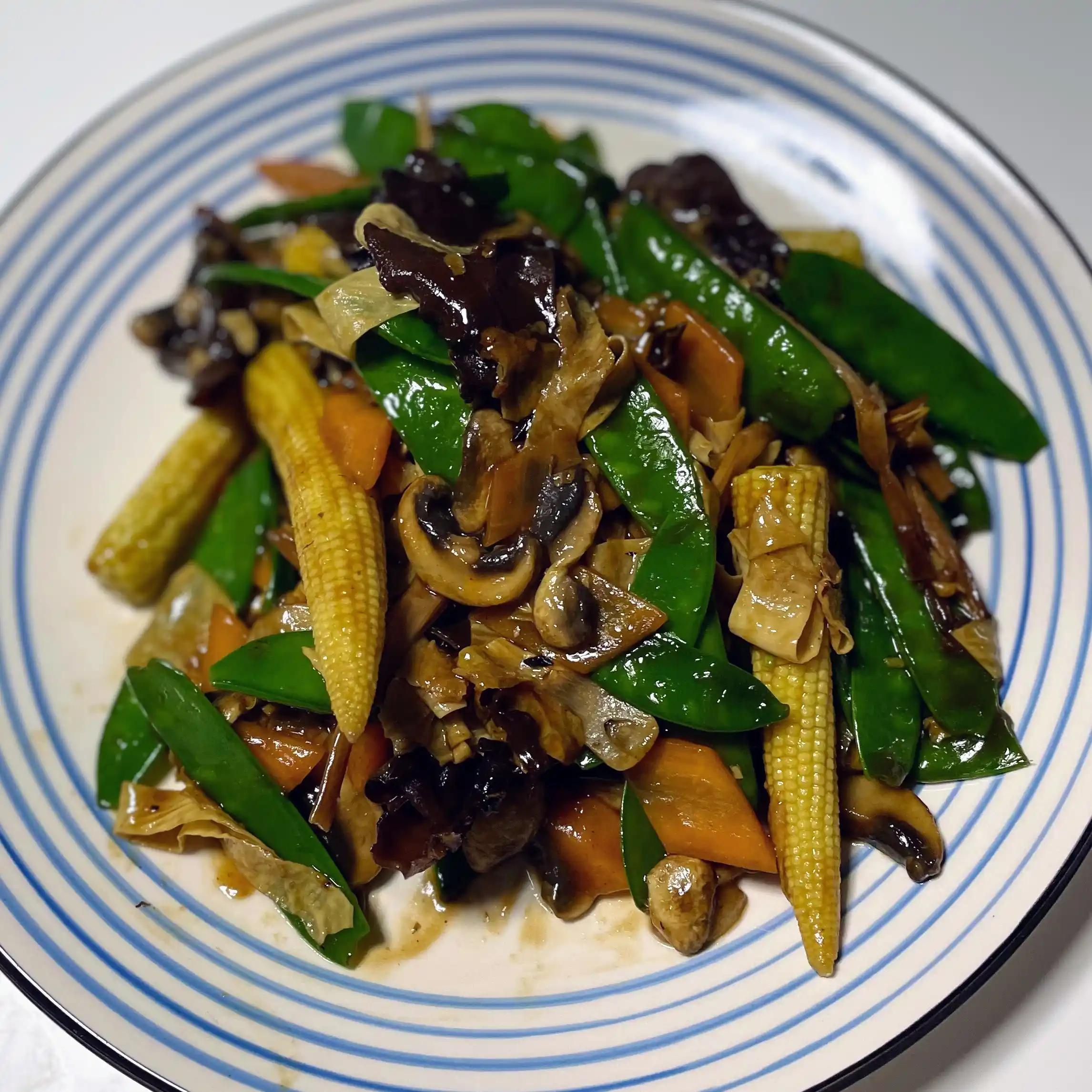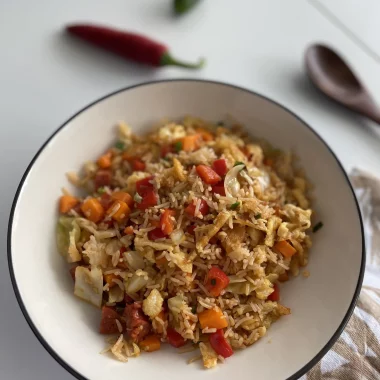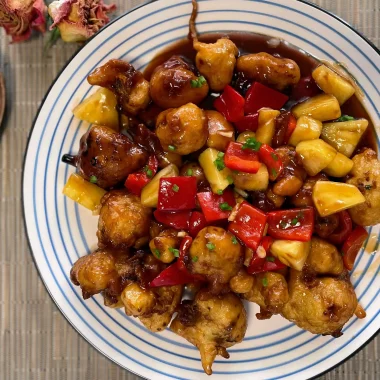Buddha’s Delight, also known as luo han zhai, is a vegetarian dish with deep cultural significance that has been enjoyed in China for centuries. The dish is named after the Buddhist monks, also known as luo han, who would often eat a similar vegetarian dish as part of their spiritual practice.
Buddha’s Delight is a dish that is commonly served during special occasions such as Chinese New Year, weddings, and other important celebrations. It is a symbol of good luck and prosperity and is believed to bring good fortune to those who eat it.
The dish is not only renowned for its delicious taste but also for its nutritional value. It typically consists of a variety of vegetables and sometimes tofu, all cooked together in a flavorful sauce. The vegetables used in this dish can vary, but commonly include things like mushrooms, bamboo shoots, snow peas, bok choy, and carrots.
Buddha’s Delight has become popular among both vegetarians and meat-eaters alike, and is a staple in many Chinese households. Making this dish at home can be a fun way to explore new ingredients and cooking techniques, and it can also be a way to connect with Chinese culture and cuisine. The dish’s cultural significance and origins make it an important part of China’s culinary heritage and a must-try for anyone interested in experiencing traditional Chinese cuisine.
What is Buddha’s Delight?
This delicious and nutritious dish is often served during special occasions such as Chinese New Year, weddings, and other important celebrations. It is considered a symbol of good luck and prosperity and is believed to bring good fortune to those who eat it.
The dish typically consists of a wide variety of vegetables and sometimes tofu, all cooked together in a flavorful sauce. The specific vegetables used can vary depending on the region and personal preference, but common ingredients include shiitake mushrooms, bamboo shoots, snow peas, bok choy, carrots, and more.
What makes Buddha’s Delight truly special is the way all these ingredients come together to create a complex and satisfying flavor profile. The sauce is usually made with a combination of soy sauce, oyster sauce, sugar, sesame oil, and white pepper, giving the dish a rich and savory taste.
One thing to note is that the dish is traditionally prepared in a vegetarian kitchen, meaning no meat or animal products are used in the cooking process. This makes it an excellent option for vegetarians or those looking to reduce their meat consumption.
Overall, Buddha’s Delight is a dish that is steeped in tradition and cultural significance, making it a beloved part of China’s culinary heritage. Its delicious taste and nutritional value make it a favorite among both vegetarians and meat-eaters alike, and it’s definitely worth trying if you’re looking to expand your culinary horizons.
Why Make Buddha’s Delight?
Buddha’s Delight is more than just a dish – it’s a cultural experience. Making this dish at home is a great way to explore new ingredients and cooking techniques, while also connecting with Chinese culture and cuisine.
But the benefits of making Buddha’s Delight don’t stop there. This vegetarian dish is packed with nutrients and vitamins, making it a healthy option for anyone looking to improve their diet. By incorporating more vegetables and plant-based protein into your meals, you can reap the benefits of a balanced and nutritious diet.
Additionally, Buddha’s Delight is a versatile dish that can be customized to fit your tastes and preferences. You can swap out vegetables based on what’s in season or what you have on hand, or adjust the sauce to your liking. This flexibility means that you can make Buddha’s Delight your own, tailoring it to suit your individual taste buds.
But perhaps the most compelling reason to make Buddha’s Delight is the dish’s cultural significance. By preparing and serving this dish, you are participating in a centuries-old tradition that has been passed down through generations. You are honoring the legacy of the Buddhist monks who inspired the dish and paying homage to China’s culinary heritage.
Ingredients You Need
You don’t need a ton of ingredients to make Luo Han Zhai and that’s part of the dish’s charm. With just a handful of components, you can make a healthy yet flavorful dish that’s perfect for most occasions.
Here’s what you need for the veggies:
- 90g Fuzhu (tofu skin)
- A handful of dried black wood ear mushrooms
- 7-10 baby button mushrooms
- 5-8 baby corn
- 10g dried day lily flowers (huang hua cai)
- 1 small carrot
- 50g mange tout (snow peas)
- 2 cloves of large garlic, minced
Then, you’ll need the following for the sauce:
- 2 tbsp Maggi soy sauce
- 3g sugar
- 1/4 tsp ground white pepper
- 1 tsp toasted sesame oil
- 4 tbsp water
- 1 tbsp cornstarch
These ingredients make up the delicious and nutritious Buddha’s Delight dish. The tofu skin, black wood ear mushrooms, baby button mushrooms, baby corn, day lily flowers, carrot, and mange tout come together to create a medley of flavors and textures. The garlic adds a savory kick, while the Maggi soy sauce, sugar, and white pepper create a rich and complex sauce. The toasted sesame oil adds a nutty flavor and the cornstarch thickens the sauce to the perfect consistency. Altogether, these ingredients make for a delightful and satisfying vegetarian meal.
How to Make Buddha’s Delight
Alright, let’s get cookin’! First things first, we gotta soak the Fuzhu, dried black wood ear, and dried day lily flower in warm water for 10 minutes. Then, we’ll top and tail the mange tout (aka snow peas) and slice up some carrots, button mushrooms, and garlic cloves.
Next, we’re gonna boil a pot of water and cook the dried day lily flowers and baby corn for a minute. Then, we’ll add the mange tout and boil for another 15 seconds. After that, we’ll drain the water and set the veggies aside in a container.
Now, it’s time to cut up the black wood ear mushrooms and Fuzhu into bite-sized pieces. Once that’s done, we’ll warm up a pan and add a tablespoon of vegetable oil. When the oil is hot, we’ll toss in the sliced garlic and fry it up until it’s lightly browned.
Next, we’ll add the sliced mushrooms, black wood ear mushrooms, and Fuzhu to the pan and stir-fry for 30 seconds to a minute. Then, we’ll throw in the boiled baby corn and day lily flowers and stir-fry for another 30 seconds to a minute.
Finally, we’ll add the sliced carrots to the mix and stir-fry for another 15-30 seconds. In a separate bowl, we’ll mix together 2 tablespoons of Maggi soy sauce, some sugar, white pepper, toasted sesame oil, water, and cornstarch to create the sauce. We’ll pour the sauce into the pan and quickly stir to coat the veggies evenly as the sauce thickens.
And voila! You can garnish it with some chopped spring onions or just serve it as is. This dish goes perfectly with rice. So, grab a plate and dig in!
Authentic Chinese Buddha’s Delight (Luo Han Zhai) Recipe
Course: Main, SidesCuisine: ChineseDifficulty: Easy2
servings15
minutes10
minutesThis recipe shows you how to make a healthy and scrumptious authentic Chinese Buddha’s Delight, also known as luo han zhai.
Ingredients
- Vegetables
90g Fuzhu (tofu skin)
A handful of dried black wood ear mushrooms
7-10 baby button mushrooms
5-8 baby corn
10g dried day lily flowers (huang hua cai)
1 small carrot
50g mange tout (snow peas)
2 cloves of large garlic, minced
- Sauce
2 tbsp Maggi soy sauce
3g sugar
1/4 tsp ground white pepper
1 tsp toasted sesame oil
4 tbsp water
1 tbsp cornstarch
Directions
- Soak Fuzhu, dried black wood ear, and dried day lily flower in warm water for 10 minutes.
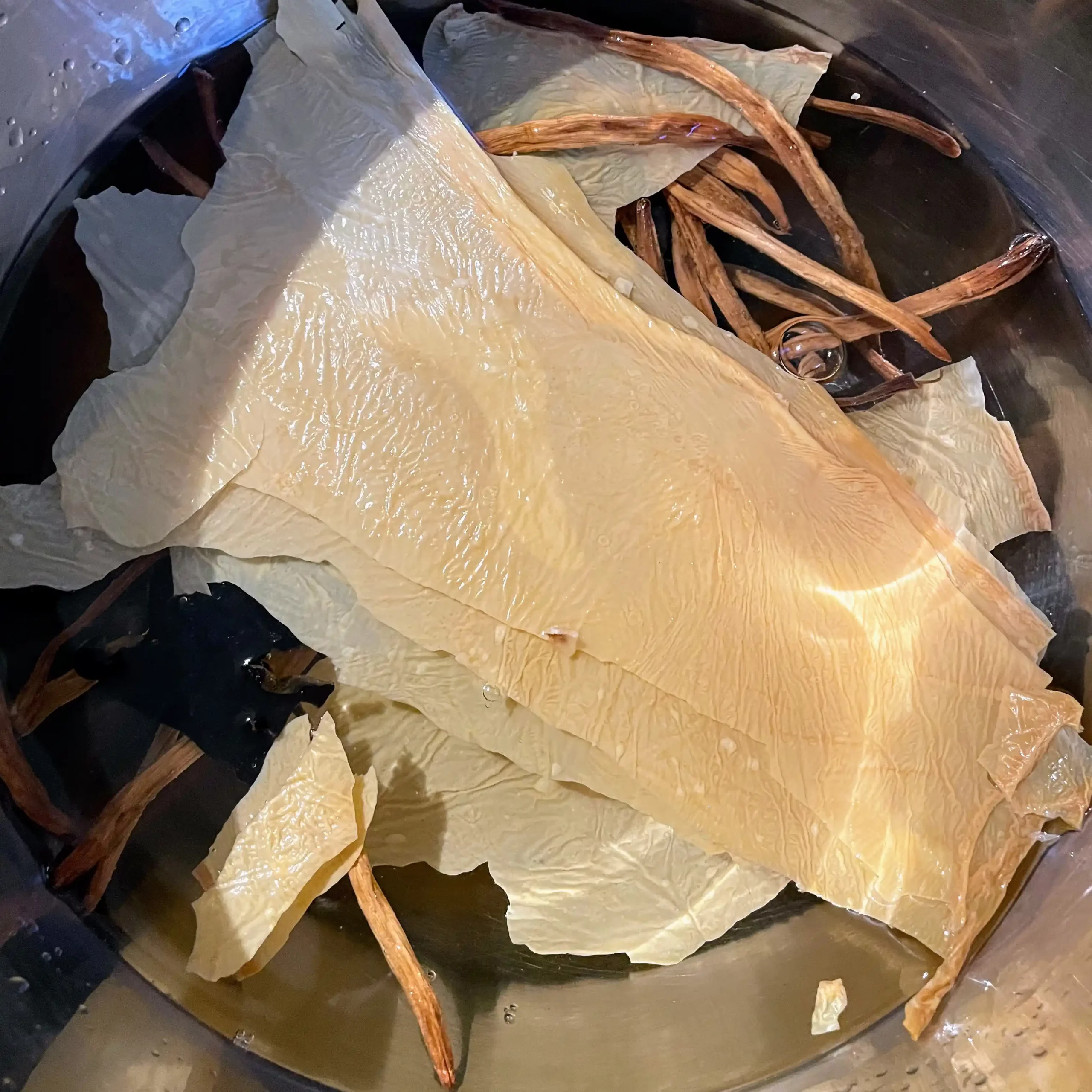
- Top and tail the mange tout (snow peas).
- Slice the carrots, button mushrooms, and garlic cloves.
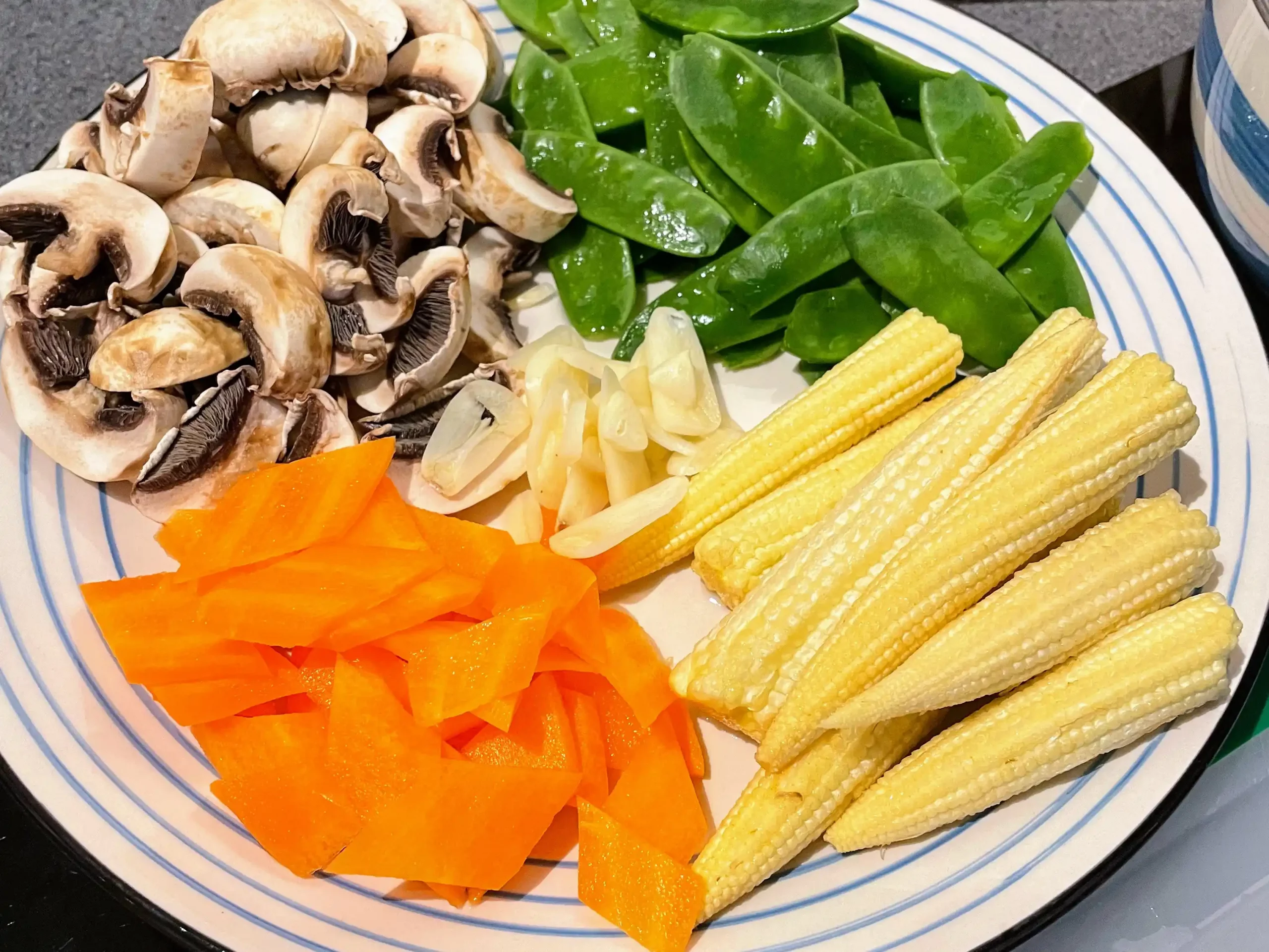
- Boil a pot of water and cook the dried day lily flowers and baby corn for 1 minute. Then, add the mange tout and boil for an additional 15 seconds. Drain the water and set the vegetables aside in a container.
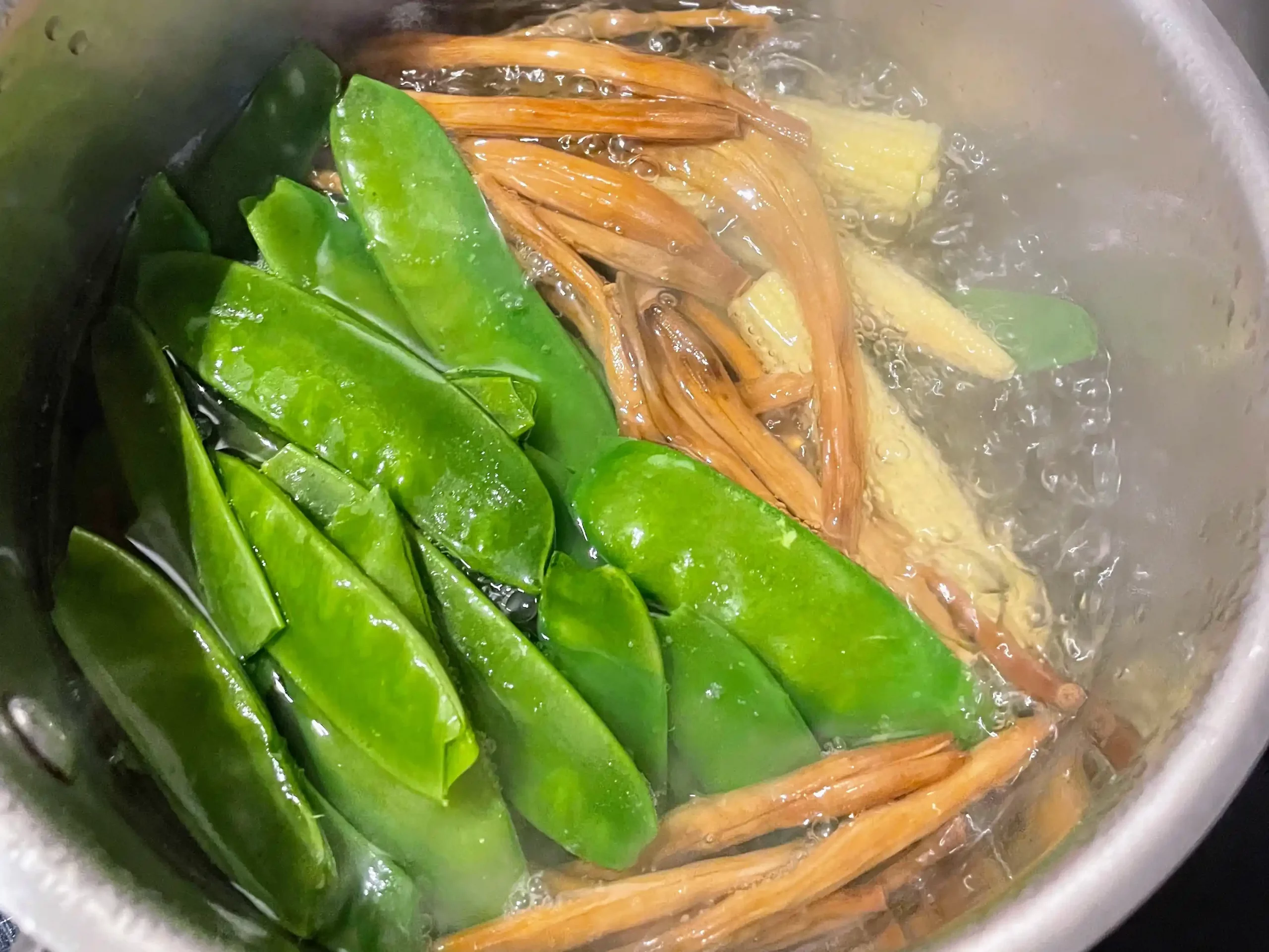
- Cut the black wood ear mushrooms and Fuzhu into bite-sized pieces.
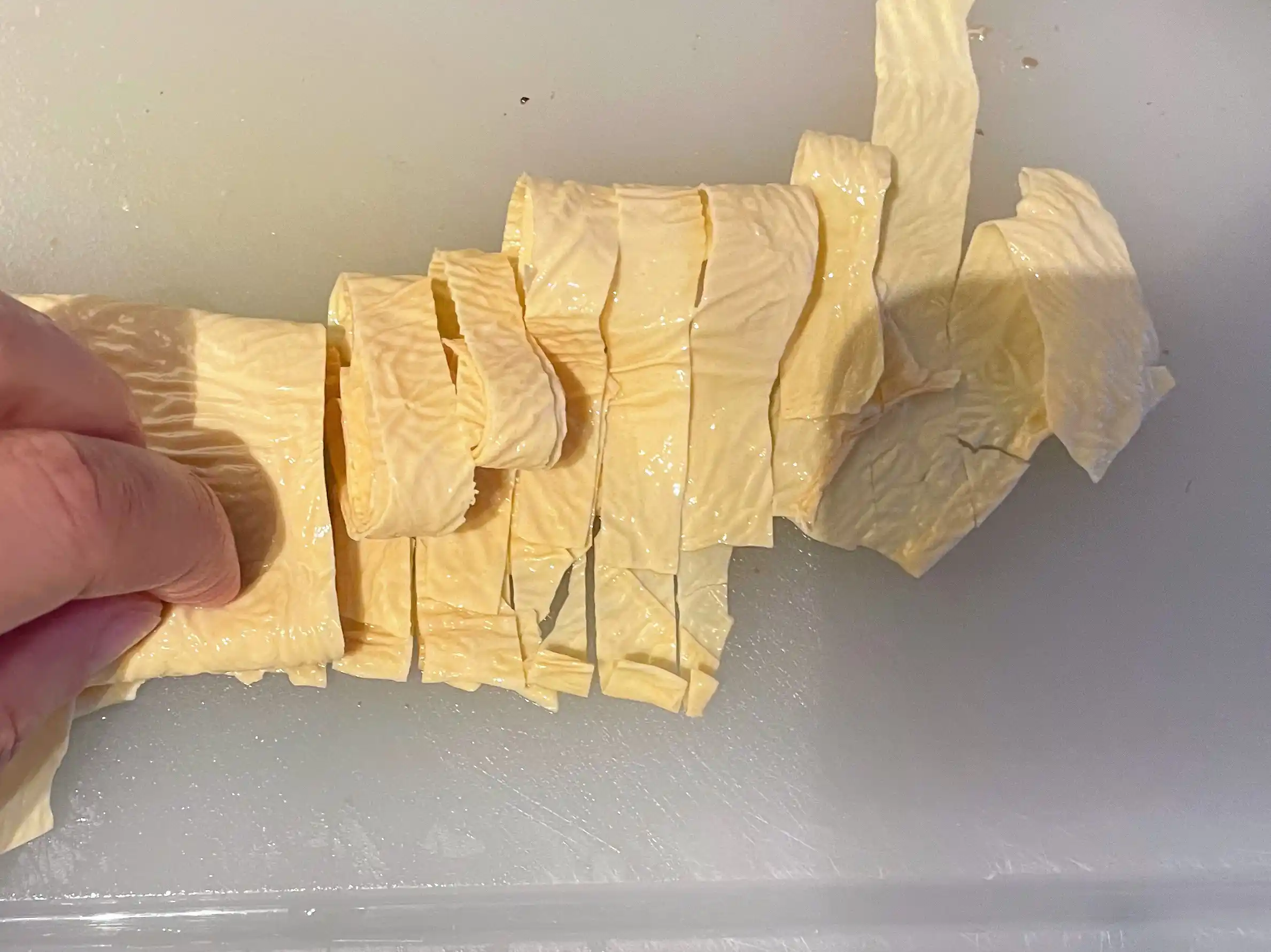
- Warm up a pan and add 1 tablespoon of vegetable oil.
- Once the oil is hot, add the sliced garlic and fry until lightly browned.
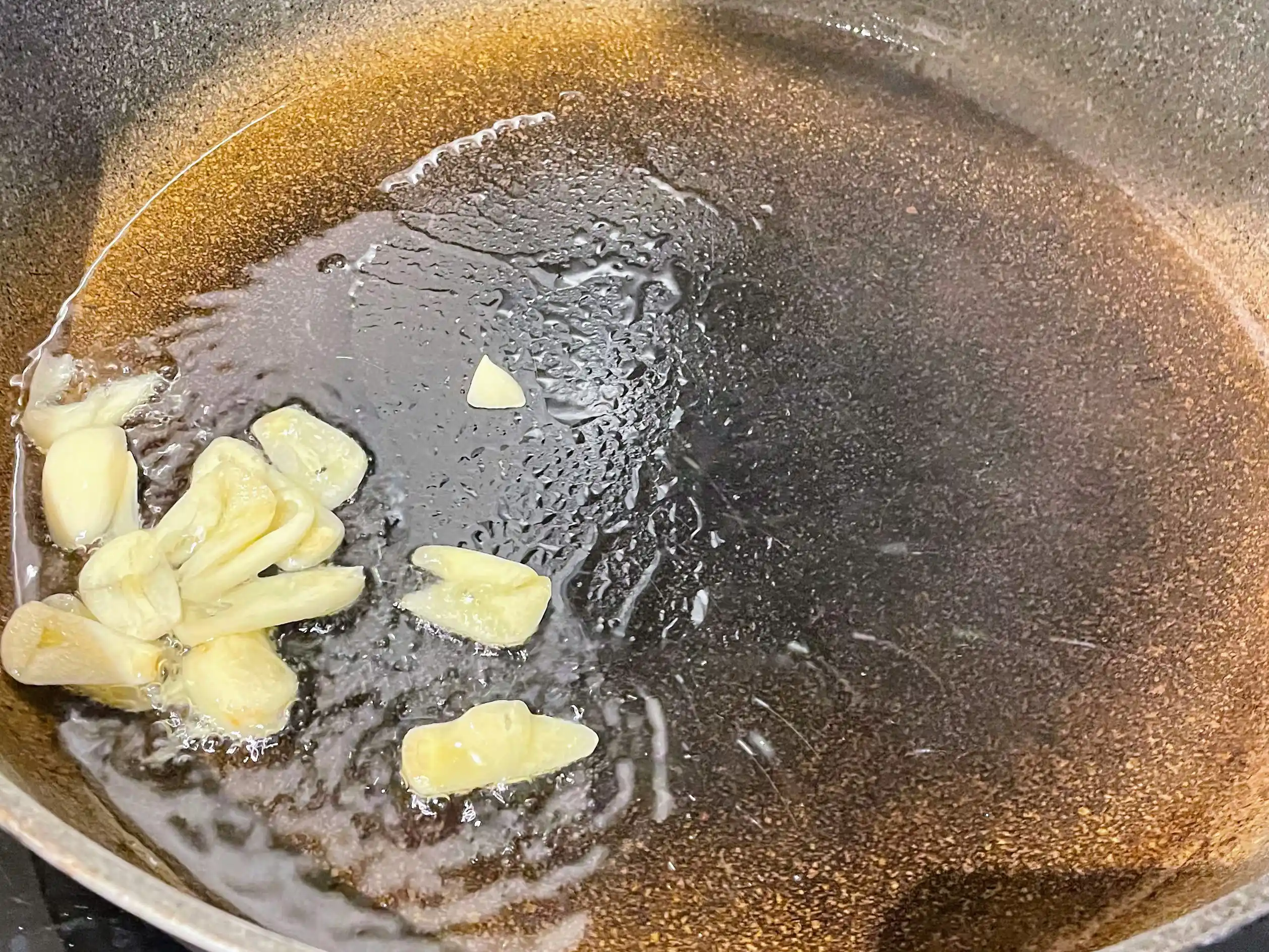
- Add the sliced mushrooms, black wood ear mushrooms, and Fuzhu. Stir-fry for 30 seconds to 1 minute.
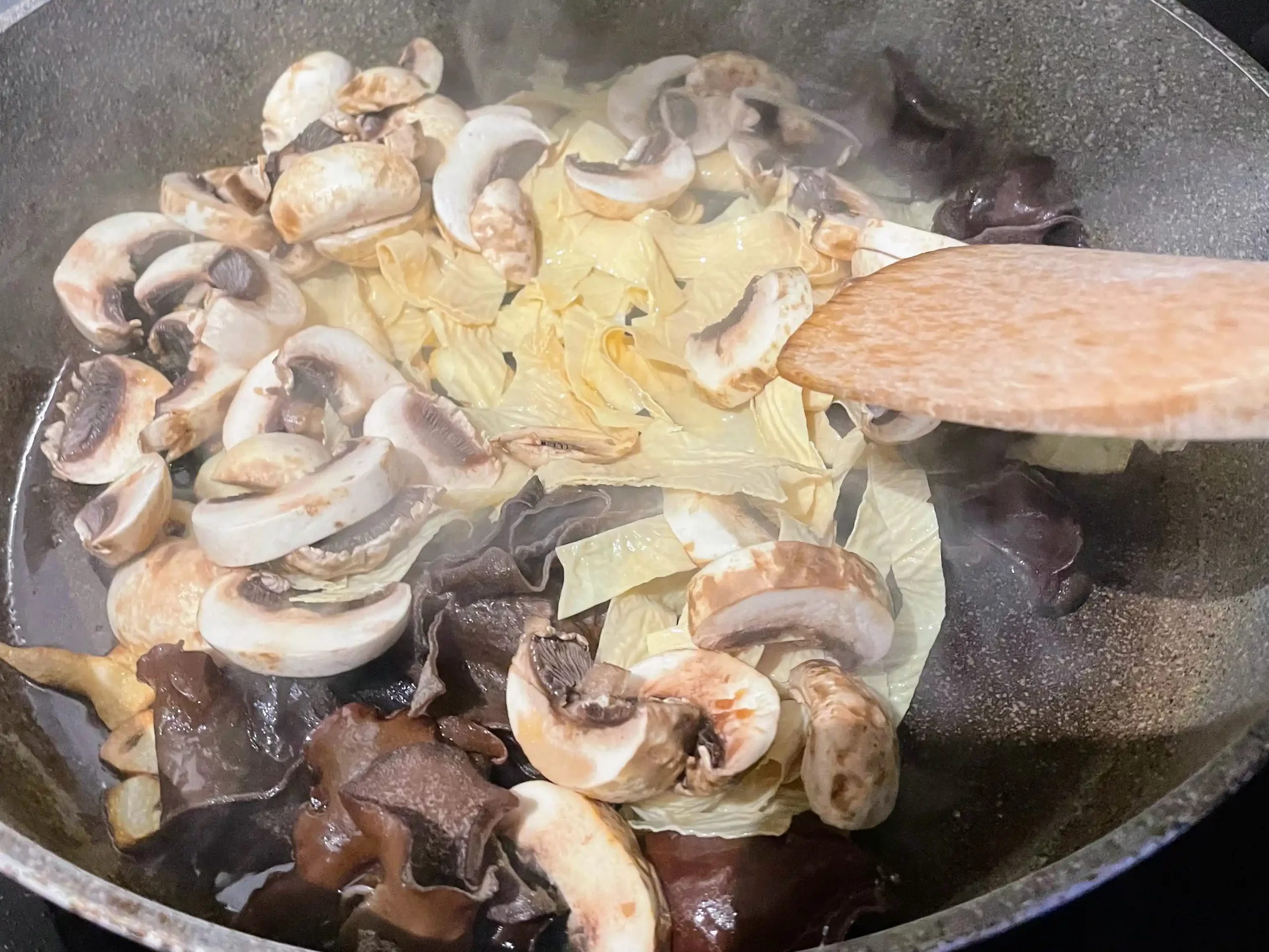
- Add the boiled baby corn and day lily flowers and stir-fry for another 30 seconds to 1 minute.
- Add the sliced carrots and stir-fry for an additional 15-30 seconds.

- In a small bowl, mix together 2 tablespoons of Maggi soy sauce, 3g of sugar, 1/4 tsp of ground white pepper, 1 tsp of toasted sesame oil, 4 tbsp of water, and 1 tbsp of cornstarch.
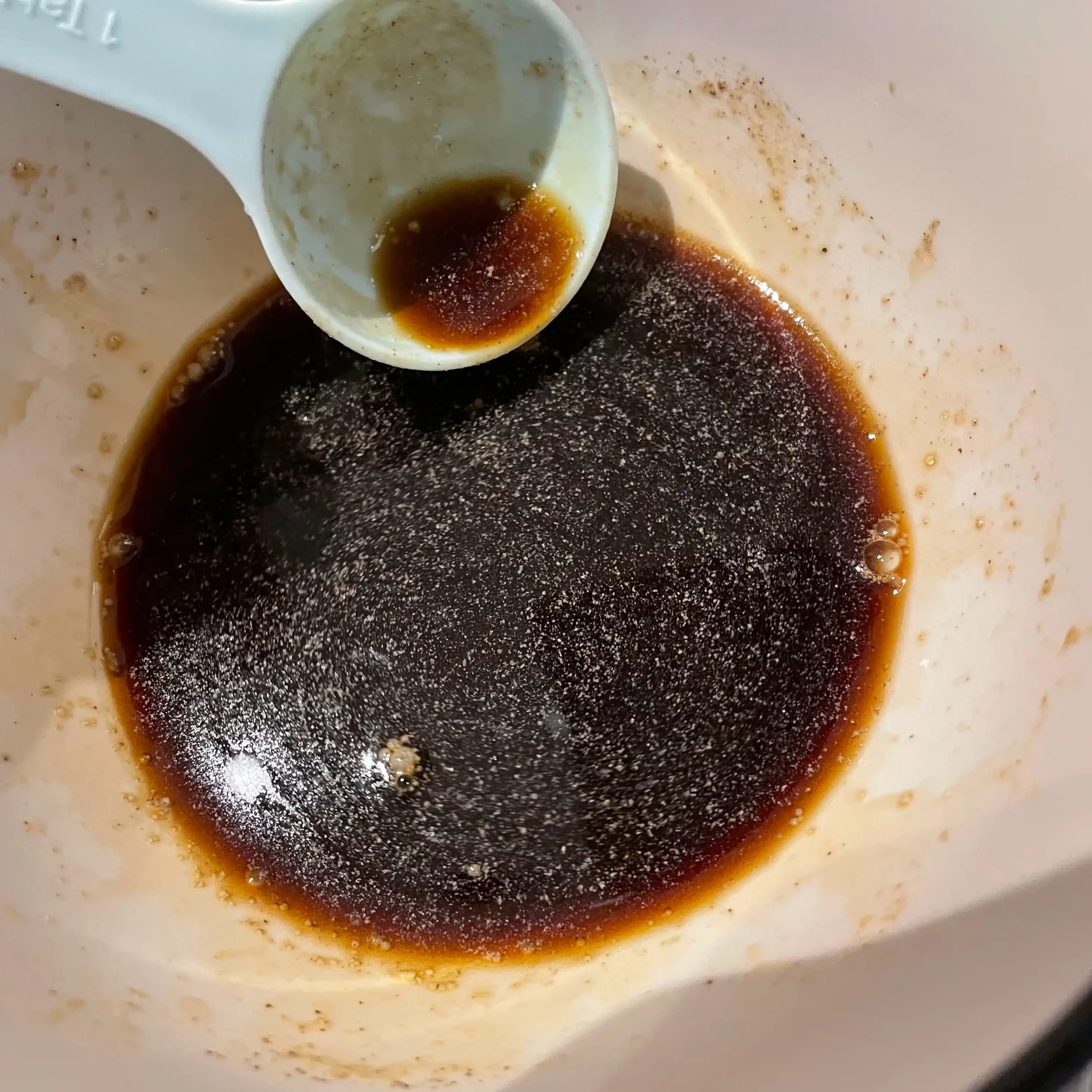
- Pour the sauce mixture into the pan and quickly stir to coat the vegetables evenly as the sauce thickens.
- You can garnish the dish with some chopped spring onions or serve it as it is. It pairs perfectly with rice. Enjoy! (In Chinese, you can say “您慢用!” which means “please enjoy your meal slowly” – “nín màn yòng!”)
